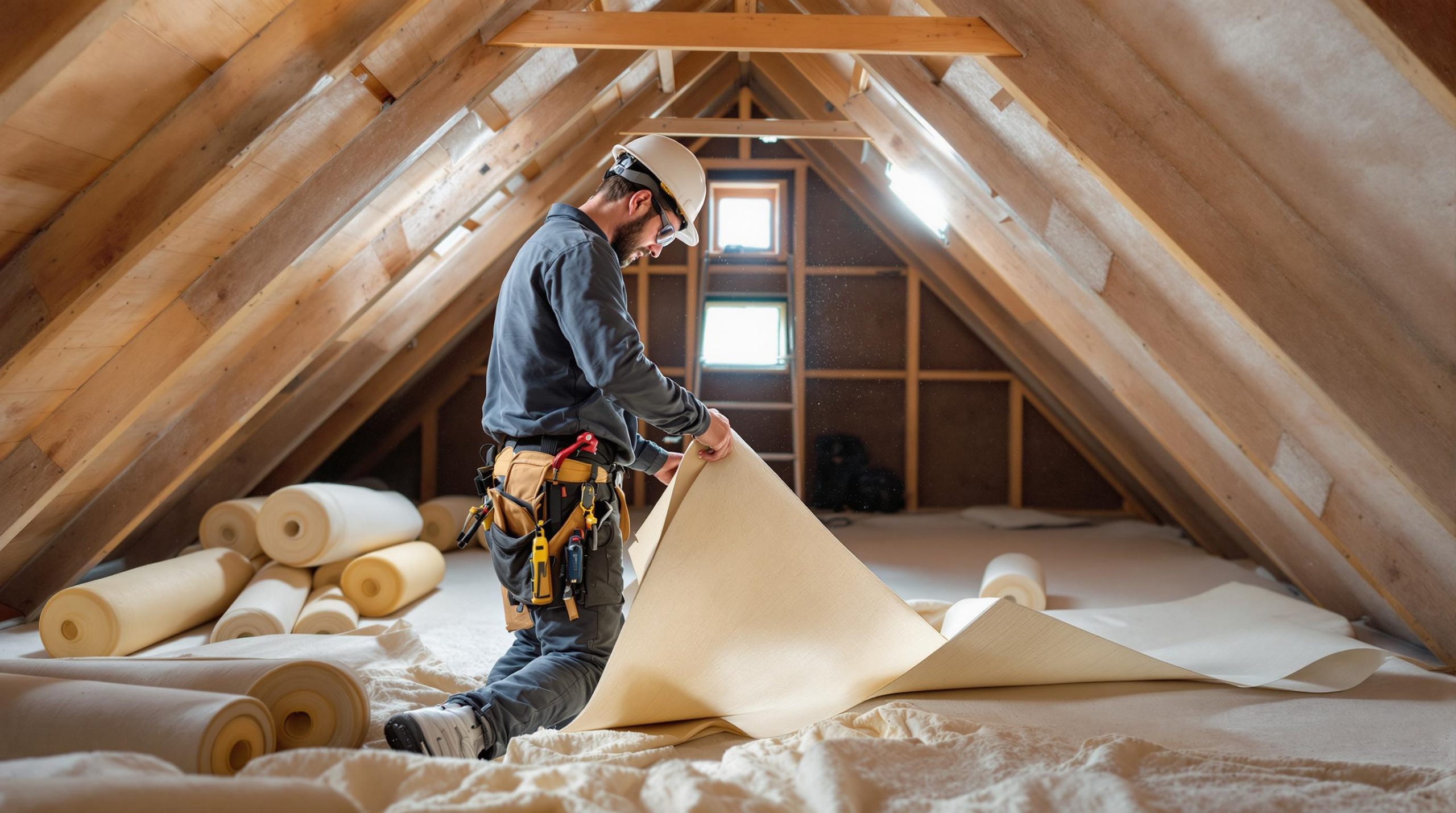Imagine a home that stays warm in winter, cool in summer, and keeps your energy bills in check. That’s the magic of effective home insulation. Whether you’re battling cold drafts or sweltering summer heat, improving your home’s insulation is one of the smartest, most cost-effective upgrades you can make.
Many homeowners don’t realize just how much comfort and savings they are missing out on because of outdated or insufficient insulation. This comprehensive guide will walk you through everything you need to know about home insulation improvements—from benefits, types, and material choices, to step-by-step upgrade tips and hidden perks.
Why Home Insulation Matters
The Power of a Well-Insulated Home
A properly insulated home regulates indoor temperatures efficiently, which:
- Reduces your reliance on heating and cooling systems
- Cuts down on greenhouse gas emissions
- Saves you money, month after month
Good insulation acts as a barrier against heat flow, keeping your home warmer in winter and cooler in summer. This ensures comfort for your family and adds long-term value to your property.
Signs Your Home Needs Insulation Improvements
Are you constantly adjusting your thermostat or noticing unusually high utility bills? Here are tell-tale signs it’s time for an upgrade:
- Uneven temperatures between rooms
- Frequent drafts near windows or doors
- Walls, floors, or ceilings that feel cold or damp
- Ice dams forming on your roof in winter
- Rising energy costs despite regular use
If you relate to any of these, your home will absolutely benefit from improved insulation.
Types of Home Insulation: Know Your Options
1. Attic Insulation
The attic is a major point of heat loss in most homes. Upgrading insulation here can drastically improve whole-house efficiency. Popular materials include:
- Glass wool (fiberglass batts or rolls): Affordable, easy to install
- Blown-in cellulose: Great for odd-shaped spaces
- Spray foam: High performance, seals gaps and cracks
2. Wall Insulation
Both exterior and interior walls can be insulated:
- Cavity wall insulation: Fills the gap between brick or block layers, common in newer homes
- Solid wall insulation: Involves adding rigid insulation boards or applying insulating render
3. Floor and Basement Insulation
Uninsulated floors let precious heat escape. Insulation options include rigid foam boards beneath floorboards or batts for basements and crawl spaces.
4. Roof and Loft Insulation
If your home has a flat or pitched roof, consider specialized insulation boards or reflective barriers for added efficiency.
5. Windows and Doors
While not traditional insulation, energy-efficient windows and sealing techniques—like weatherstripping and caulking—prevent drafts and maintain a tight building envelope.
Choosing the Best Insulation Material
When selecting insulation, you’ll want to consider:
- R-value: Measures how well material resists heat flow. Higher is better.
- Moisture resistance: Vital for basements, crawl spaces, and humid climates.
- Eco-friendliness: Look for sustainable materials like recycled cellulose, sheep’s wool, or denim.
- Cost and availability: Fiberglass and cellulose offer good performance at reasonable prices.
Step-by-Step: How to Improve Home Insulation
1. Get an Energy Audit
A professional energy audit pinpoints where your home is losing energy and helps prioritize upgrades for biggest impact. Many utilities offer this service or recommend qualified experts.
2. Seal Air Leaks First
Before adding insulation, seal up air leaks around windows, doors, chimneys, and wiring. Even the best insulation is less effective if air escapes.
3. Upgrade the Attic
Add or top up attic insulation to recommended R-values. This often has the fastest return on investment.
4. Treat Walls and Floors
Consider wall insulation if you live in an older home with none, or add underfloor insulation if you have accessible crawl spaces.
5. Insulate the Basement or Crawl Space
Don’t forget these often-overlooked areas—they can contribute to uncomfortable drafts and moisture problems.
6. Upgrade Windows and Doors
Replace single-pane windows with energy-efficient double or triple glazing. Use weatherstripping and door sweeps to seal gaps.
7. Check and Replace as Needed
Insulation can degrade or shift over time. Inspect each area every few years, especially after renovations or repairs.
The Benefits Go Beyond Just Saving Money
More than Just Lower Bills
When you make insulation improvements, you unlock a host of additional benefits:
- Consistent comfort: No more cold floors or stuffy rooms
- Quieter indoor environment: Insulation reduces noise from outside
- Improved indoor air quality: Less dust, pollen, and outdoor pollutants enter your home
- Environmental impact: Reduced energy use means a smaller carbon footprint
- Increased property value: Energy-efficient homes attract higher prices and more buyers
Modern Trends in Home Insulation
With advances in building materials and a growing focus on sustainability, modern solutions are available for every home and budget. Today’s homeowners are choosing:
- Recycled and eco-friendly insulation: Such as cellulose, denim, or sheep’s wool
- Spray foam: For sealing hard-to-reach spaces
- Radiant barriers: Reflective insulation for attics in hot climates
- Smart home integration: Sensors to monitor insulation performance and energy usage
DIY vs. Professional Insulation: What’s Right for You?
You can tackle some insulation upgrades yourself—like adding batt insulation to your attic or sealing small gaps. However, for wall insulation, spray foam, or extensive retrofits, a professional’s touch ensures safety and maximum efficiency.
Insulation Tips for Older and Newer Homes
- Older homes: Focus on cavity wall insulation, upgrading single-pane windows, and sealing air leaks.
- Newer homes: Ensure attic and wall insulation meets or exceeds local building codes, and address any areas with settling or gaps.
FAQs About Home Insulation Improvements
How much can I save by upgrading insulation?
Savings vary, but homeowners can often cut heating and cooling costs by up to 20% or more with comprehensive insulation improvements.
Does insulation help in summer too?
Absolutely! It keeps unwanted heat out, reducing the need for air conditioning and improving indoor comfort.
How long does insulation last?
Quality insulation can last decades but should be checked periodically for moisture issues, pest damage, or shifting.
Conclusion: Start Your Insulation Journey Today!
Upgrading your home’s insulation is a powerful way to enjoy lower energy bills, better comfort, and healthier living—all while making a positive impact on the environment. Every improvement you make adds value to your home and enhances your family’s day-to-day life.
Ready to transform your home? Start with an energy audit, tackle those drafts, and invest in insulation improvements that pay you back year after year. Your future self—and your wallet—will thank you.
Take action now: Schedule an energy audit or speak with a local insulation professional to explore your options. Don’t wait—create a more comfortable, efficient, and eco-friendly home today!






